Author:
Green Steps
Short summary:
Growing your own vegetable garden has multiple advantages, from saving money, eating fresher and tastier vegetables to having a positive impact on the environment. Furthermore, if brought into schools, it can improve the physical and mental health of children and puts them directly in contact with natural science. Read this article to know more about our Groovy Garden pilot project with Otto Glöckel elementary school in St. Pölten.

During this year, we had the amazing opportunity to create vegetable plots in the garden of Otto Glöckel elementary school in St. Pölten. Growing your own vegetable garden has multiple advantages, from saving money on groceries, eating fresher and tastier vegetables, to having a positive impact on the environment by avoiding the need for transportation and plastic packaging.
Furthermore, in recent years our children have spent too much time indoors, which leads to several physical and mental issues related to their detachment from nature and lack of mobility. All those problems can be summarized under the umbrella term “Nature deficit disorder” coined by author Richard Louv in his book "Last Child in the Woods: Saving Our Children from Nature-Deficit Disorder."
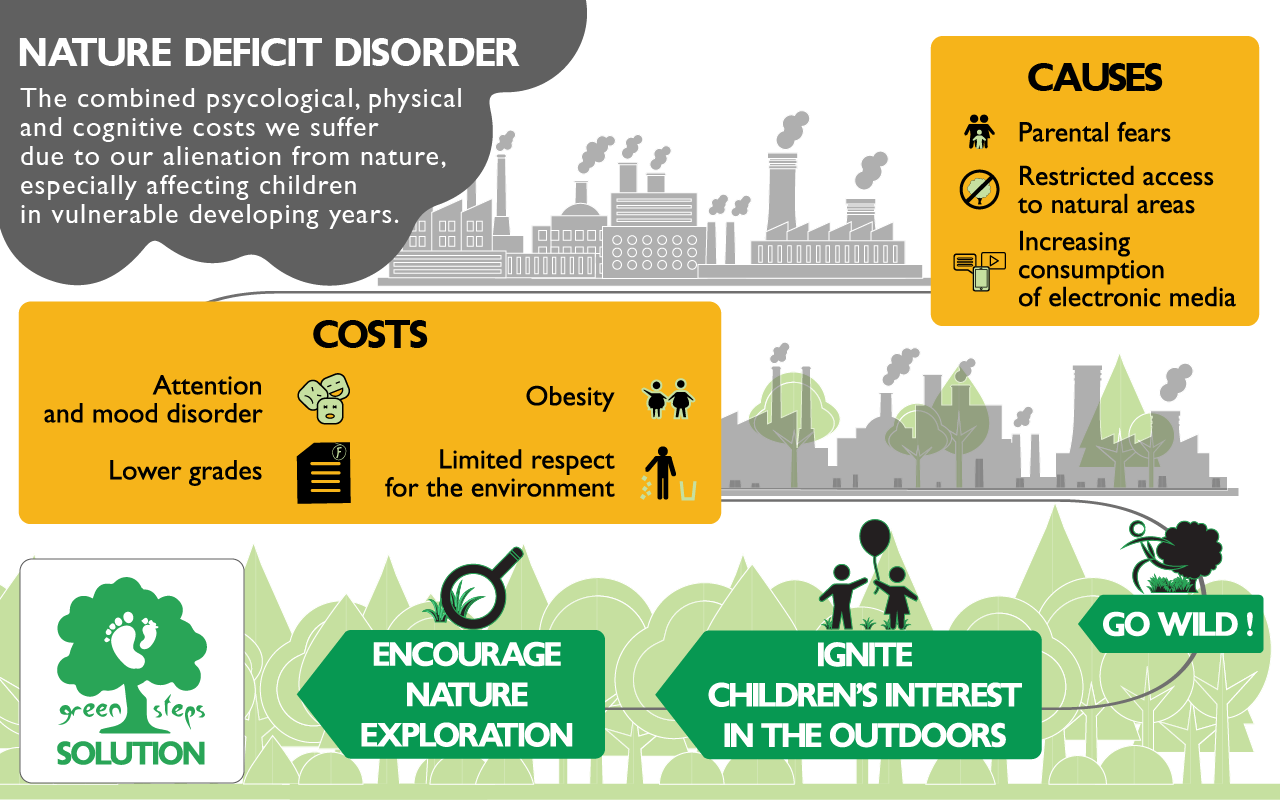
Taking care of a vegetable garden at home or at school can then become a crucial activity to prevent or remove this nature deficit disorder since children spend more time outside and engage in healthy, meaningful and above all fun physical exercises, like digging, planting, weeding, and harvesting. Gardening also has a substantial educational effect by helping children to understand plant life cycles and ecosystems in a direct and practical way.

For all those reasons we were very happy to start a gardening pilot project at Otto Glöckel elementary with the students from a Montessori class and the municipal afternoon care program. We defined an area of the school garden that was not used for any specific purpose and in spring, we prepared a sample garden bed of 9m2 to plant a variety of vegetables and flowers.
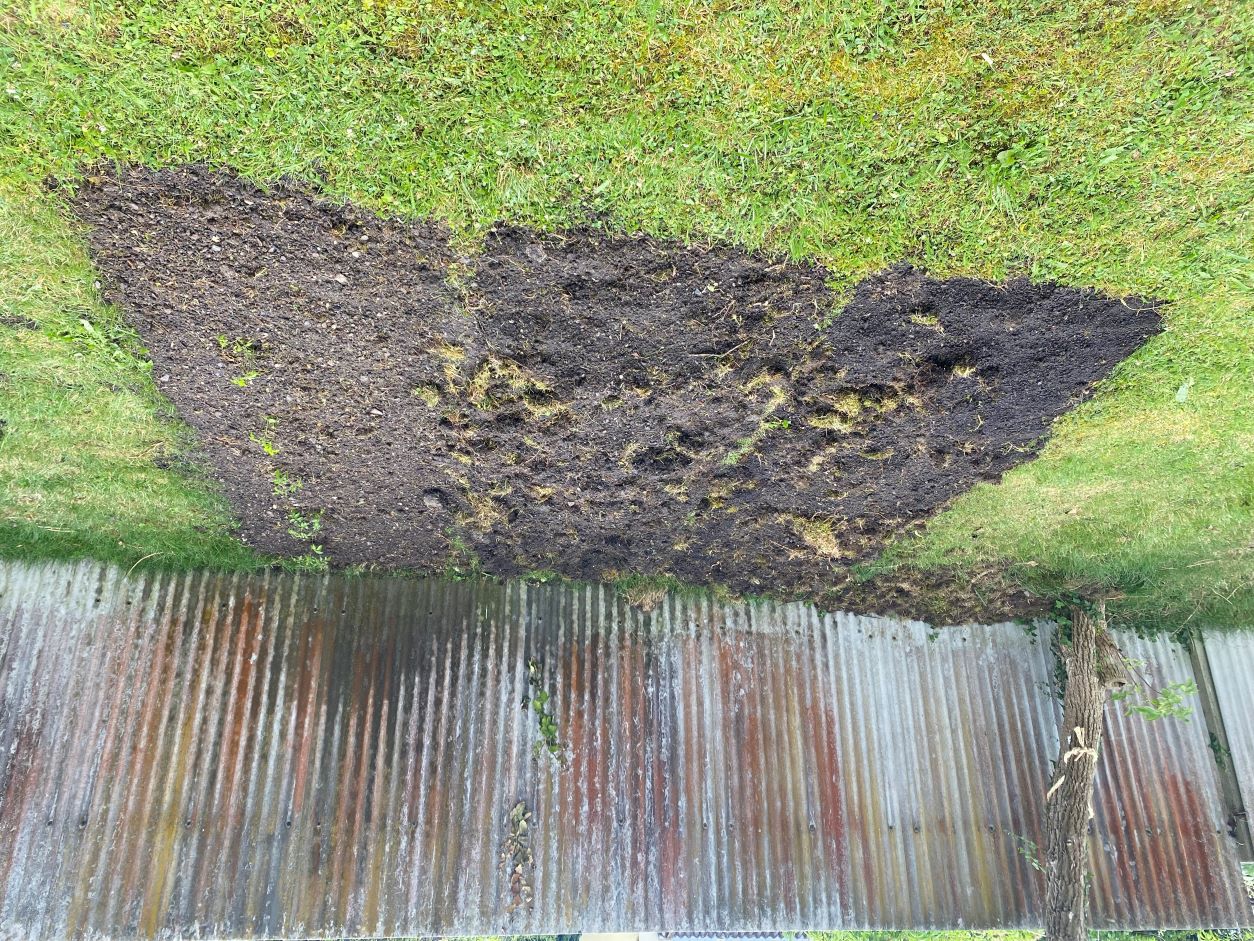
While preparing a vegetable garden, it is very important to locate the beds in a position with easy access to a water hose, since watering the garden regularly is an essential task during the summer season. We purchased basic tools, and the school steward borrowed us existing ones to till the soil. Tilling the soil was one of the hardest tasks, because it had never been cultivated before and many years of mowing the lawn had condensed the soil substantially. We found substantial amounts of construction debris, which we had to remove and had to add a large quantity of organic manure to make the soil fertile enough to grow nutritious vegetables.
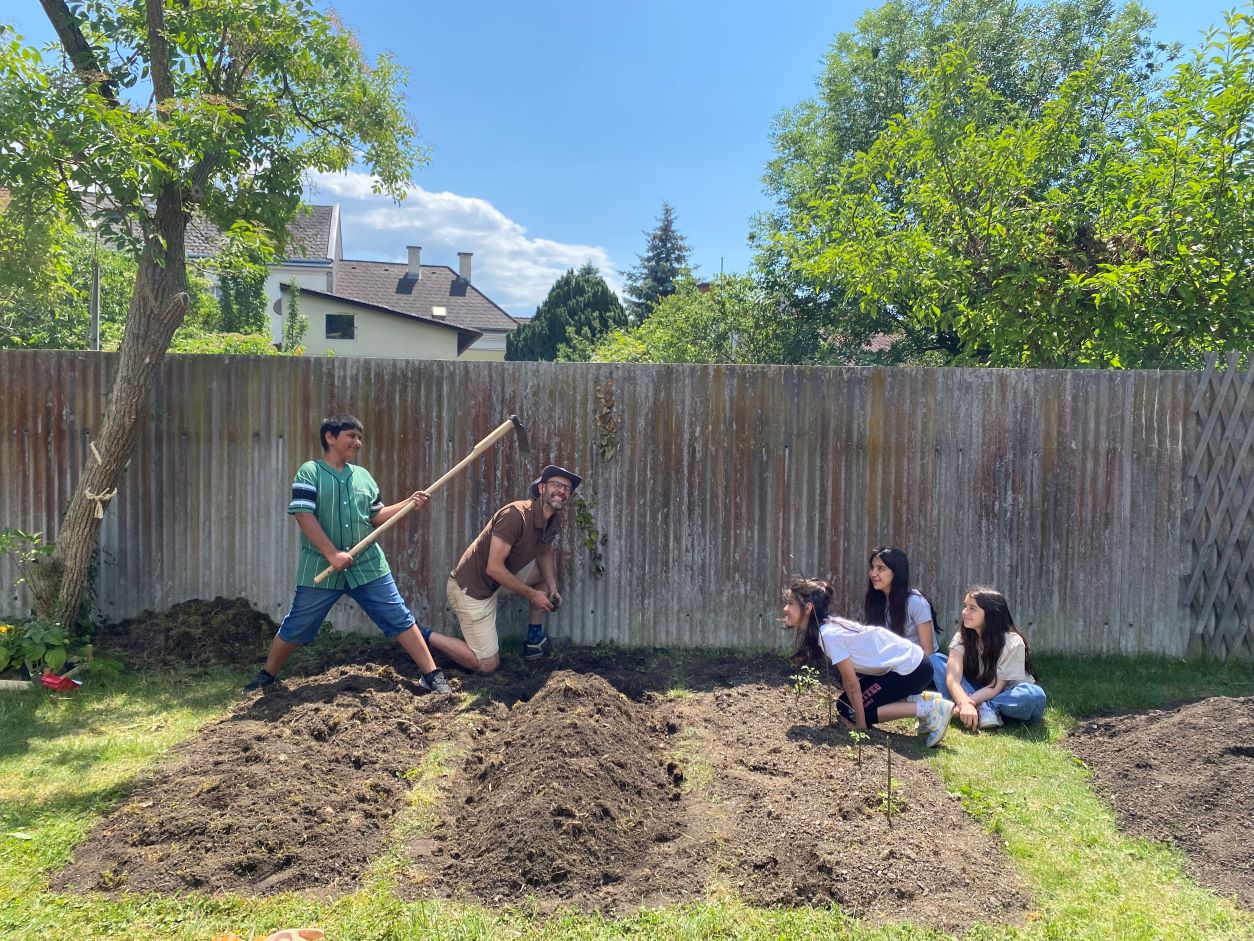
As a next step, we framed the veggie bed borders with red bricks, we sowed the seeds, plant seedlings and waited for everything to grow. The kids helped us to write on small wooden boards the veggie names. Finally, over summer we got a very beautiful and colorful vegetable garden.
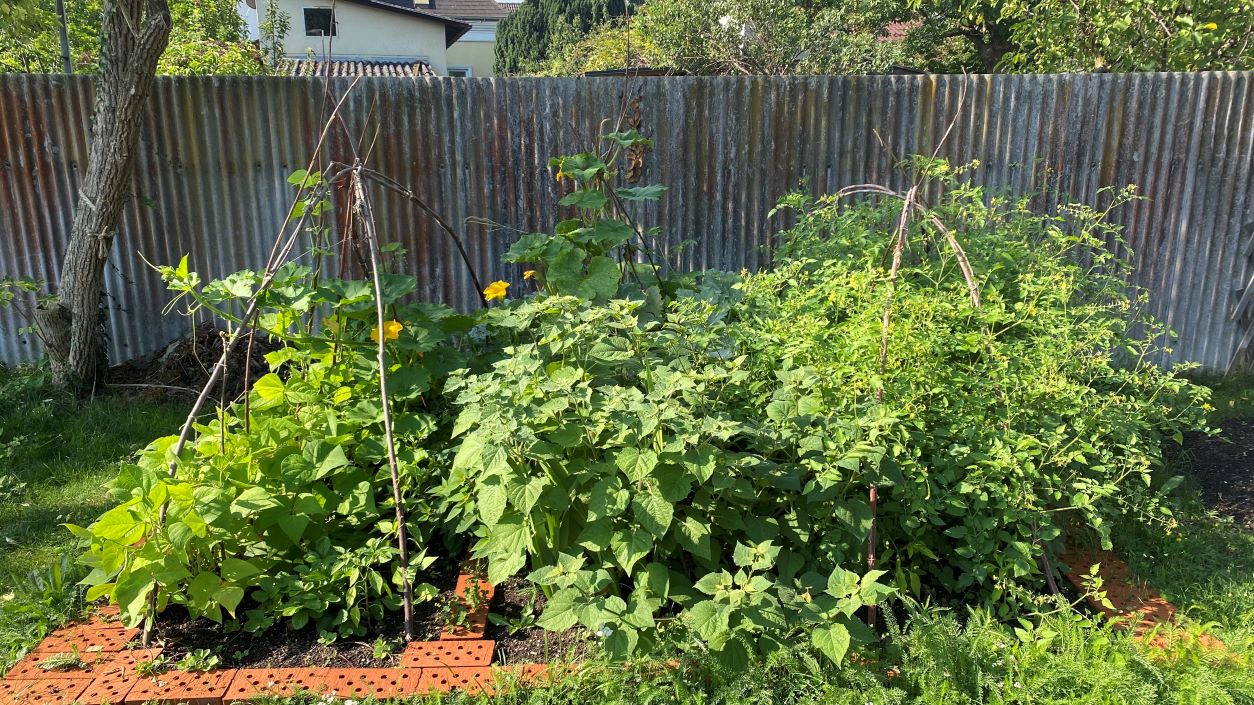
When school started again, at the end of August, the children helped us with harvesting tomatoes, beans, zucchini, cucumbers, pumpkins, and strawberries! The kids had fun discovering the shape of vegetable plants and some of the children, at the beginning, were a bit hesitant at the idea of eating something that was coming directly from a plant! We convinced them that those tomatoes were edible and tasted much better than the ones from the supermarket!

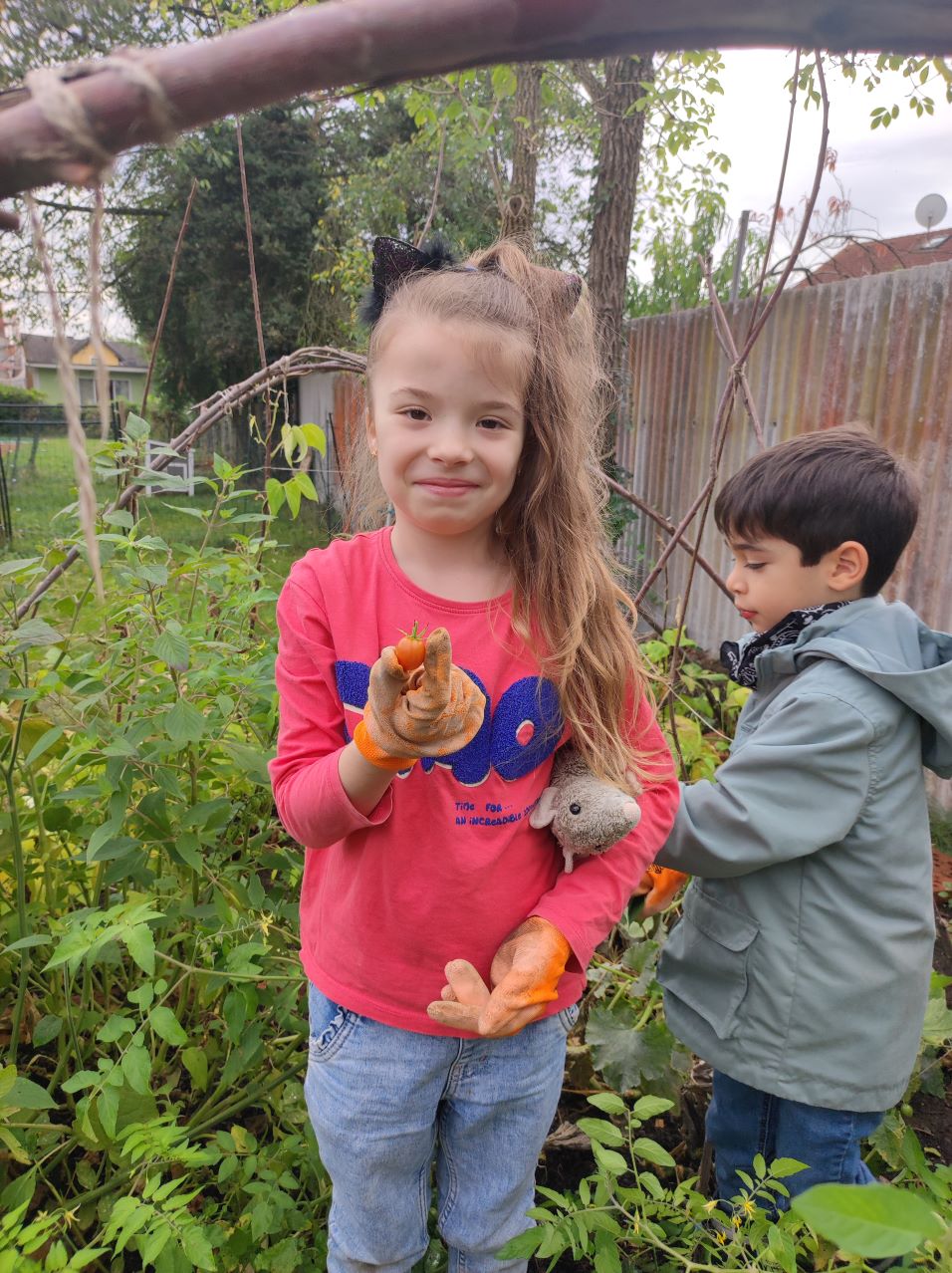
The Groovy Garden format is designed to involve children as much as possible in the whole process of starting a garden, from preparing the soil to harvesting the vegetables, so that they understand in the course of one school year the entire work cycle of subsistence gardening. In order to scale our pilot project, we prepared two more 9m2 veggie plots over the summer of 2023 after the school principal had asked which teachers would like to participate.
First, the children helped us with laying the bricks and creating frames around the beds.
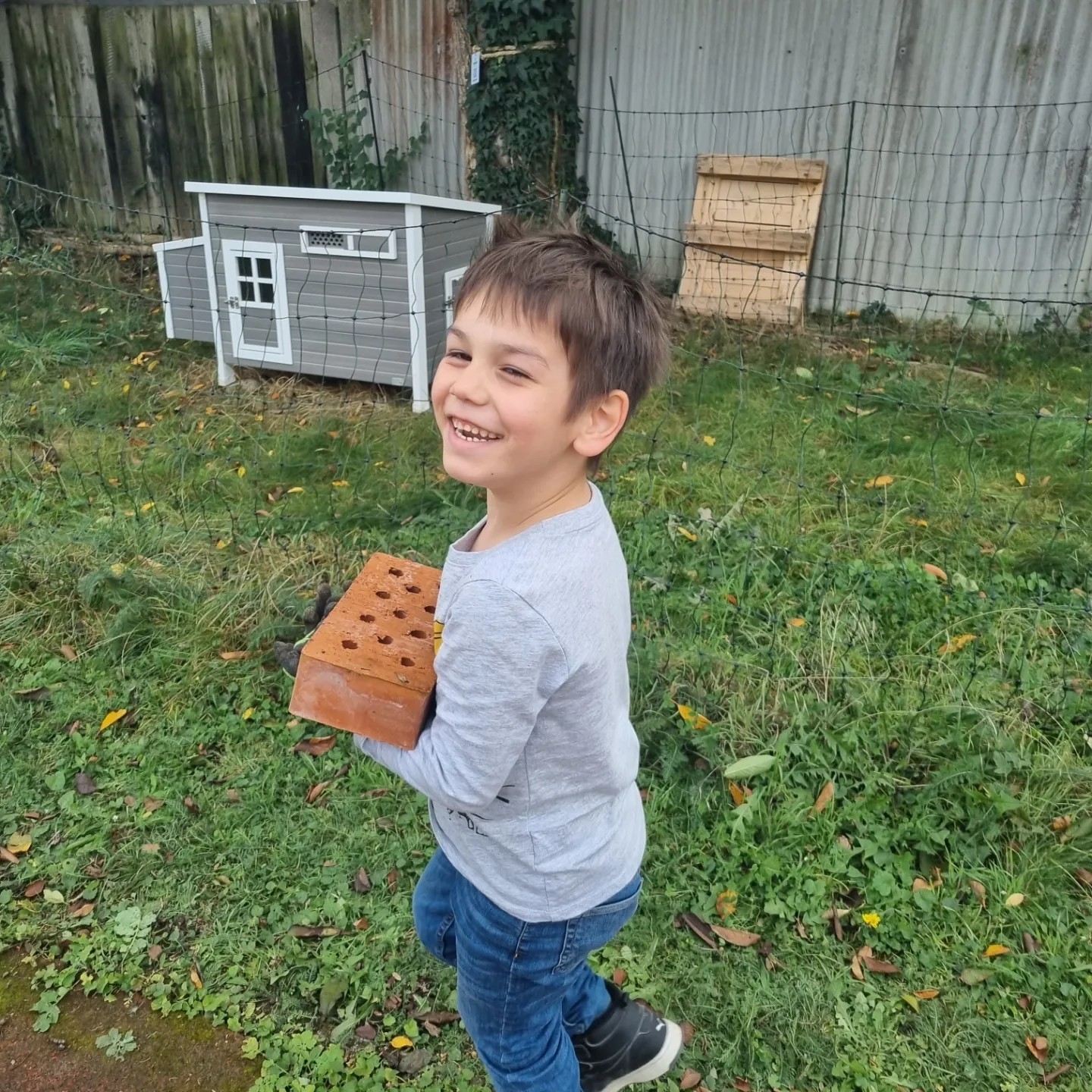
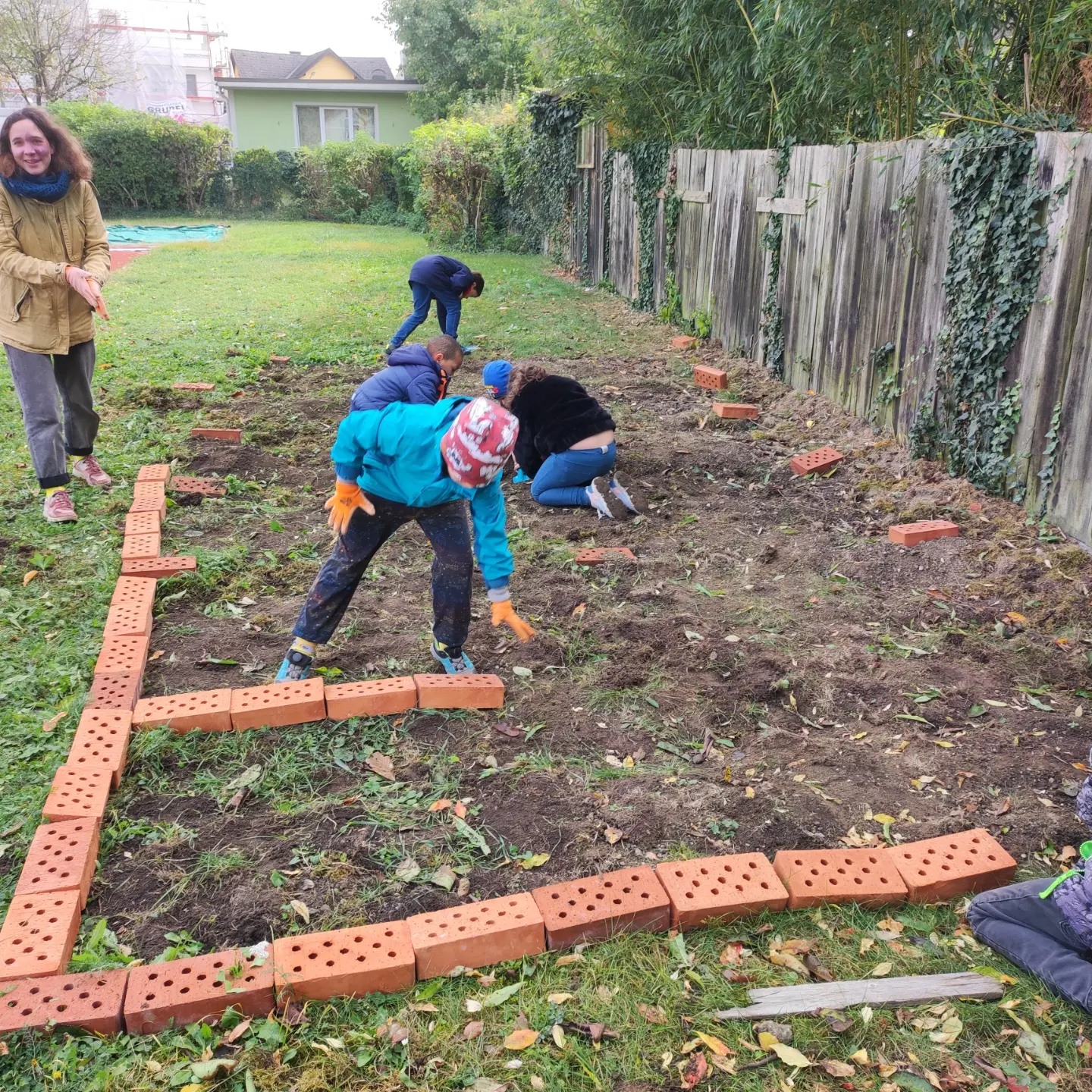
Then we added the manure!
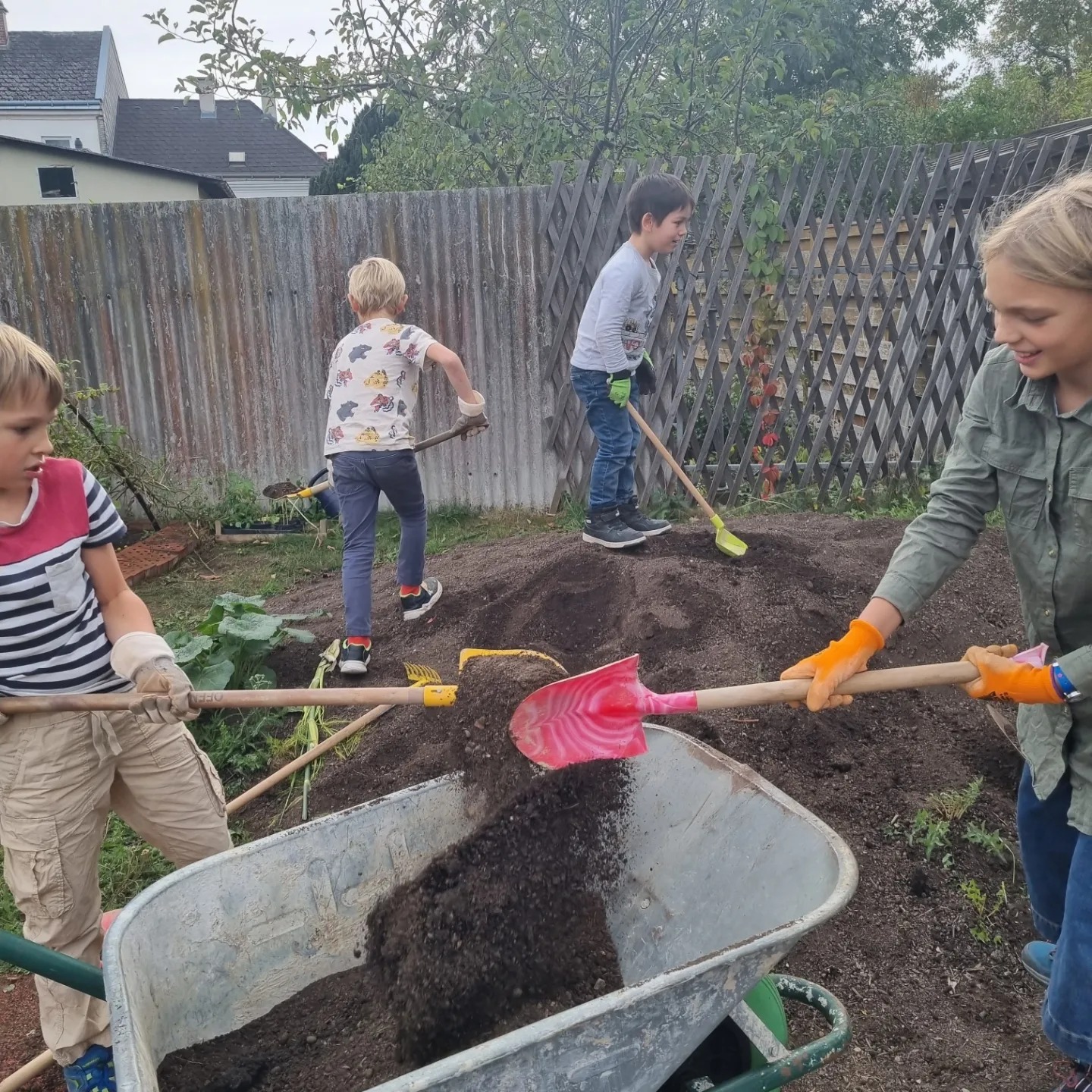
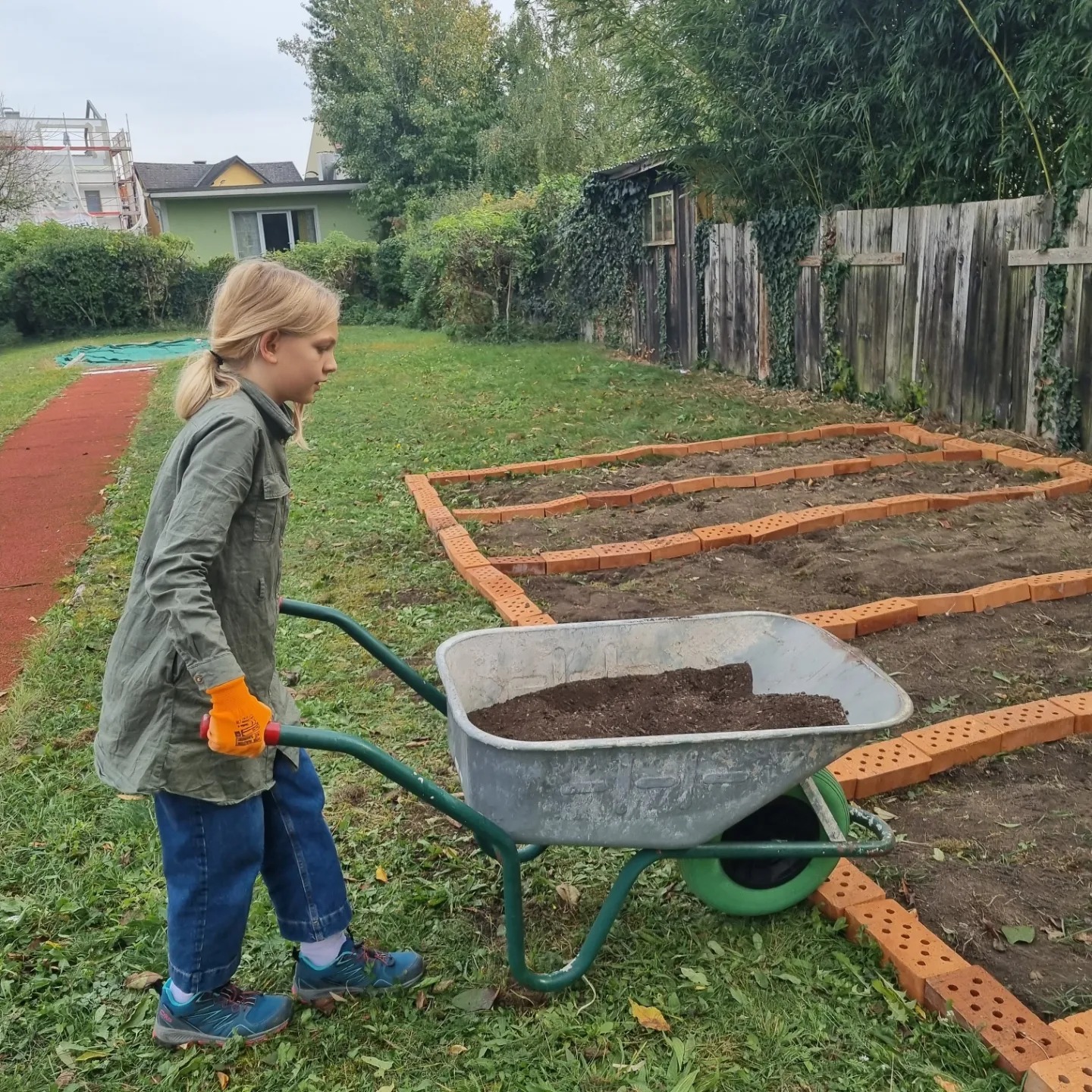
At this point the beds needed to rest and absorb all the nutrients from the manure to be ready to grow vegetables in the warm season! Since the autumn already started, and not much could be planted, we decided to move indoors for a few planning classes! In the first class we taught about the different type of vegetables that can be planted and to which plant family they belong. Then, we divided the children into small groups and to each group we assigned a specific vegetable family to plant.
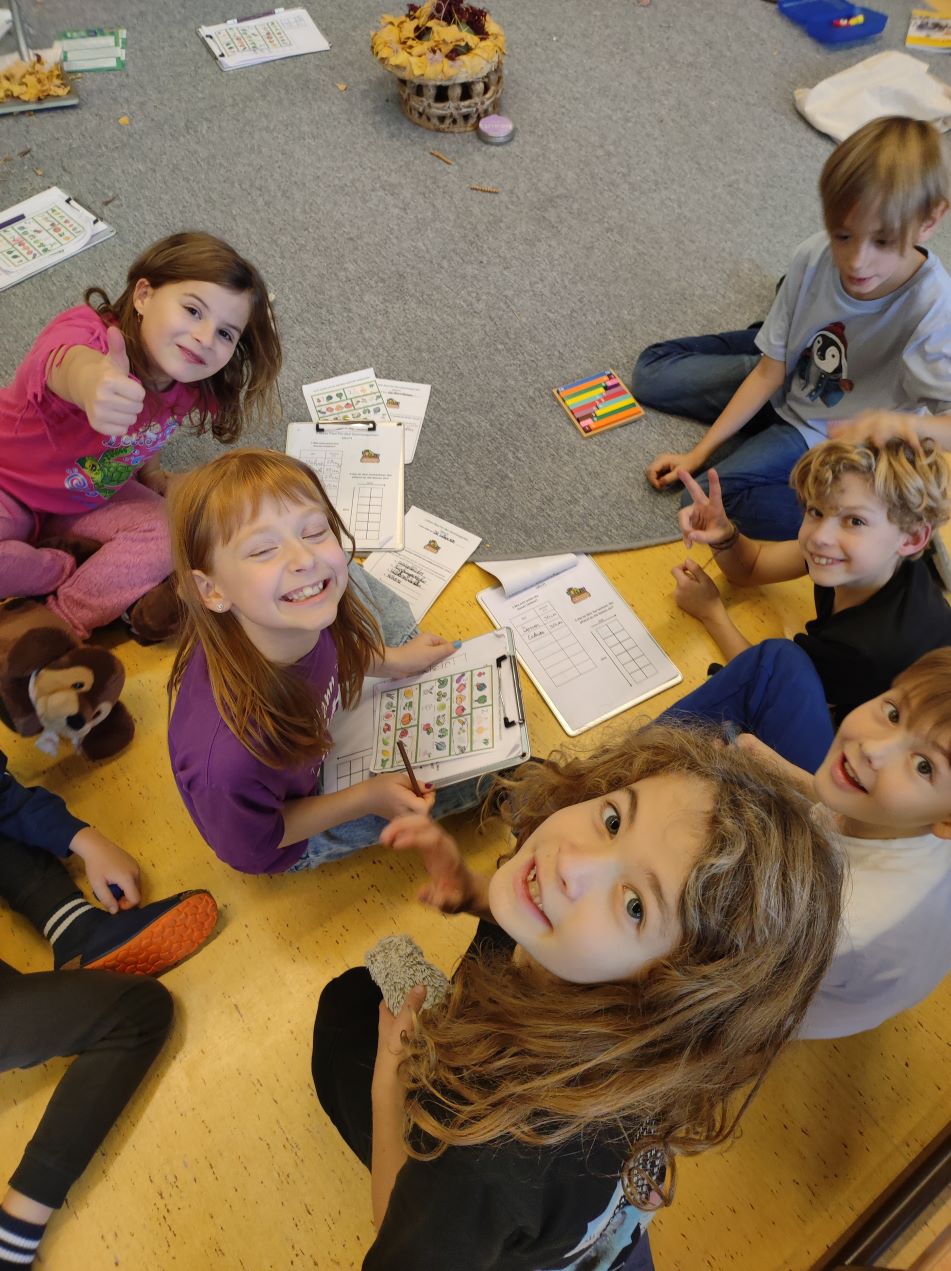
In the second class instead, we focused on the sowing distance of seeds and seedlings, so that the children could get an idea about how big a certain plant grows, and how many seeds can be planted in a limited space.

The last indoor class instead, was about the right timing to sow the seeds indoors or directly in the soil outside. In this way, the children became aware of which vegetables need to be planted first and where at the beginning of the year!

We are looking forward to the next classes in January to finally sow our first seeds indoors!! If you would like to start your own Groovy Garden project in your school or neighborhood communities, you can use our ARK best practice and contact us for support at info@greensteps.me





